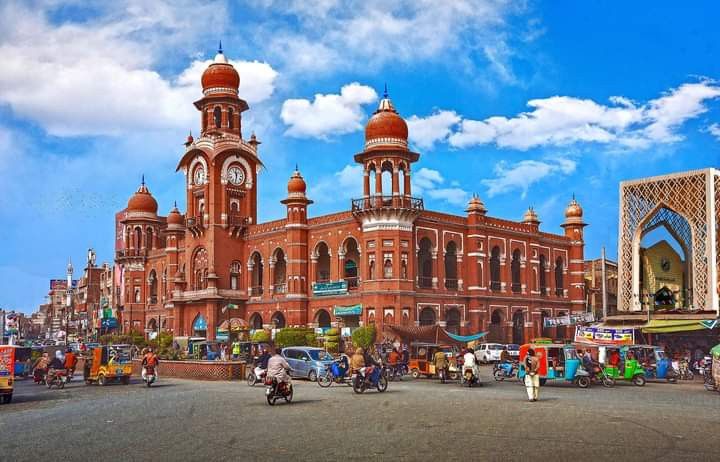Multan – The City of Saints, Sun, and Sufi Soul

Welcome to Multan
Multan greets you not with flash, but with depth.
It’s hot, it’s ancient, and it carries the scent of roses and clay, especially after rain. Walk its streets and you'll hear the echo of saints, see the glow of blue tile mosaics, and taste history in its food.
Here, faith, art, and tradition flow together like the Chenab River, embracing every traveler who walks in with an open heart.
Multan isn’t loud. It speaks softly — and when it does, it speaks to your soul.
A Glimpse into Multan’s History
Multan is one of the oldest living cities in the world, with roots reaching back over 5,000 years.
It was once part of the Indus Valley Civilization and later flourished under the Hindu Kushan Empire. The city rose to spiritual fame when Sufi saints like Bahauddin Zakariya and Shah Rukn-e-Alam made it their home in the 12th and 13th centuries.
The name "City of Saints" isn't a tagline — it's a legacy. Multan became a beacon of Sufi thought, peace, and hospitality. Its shrines still draw thousands of pilgrims who come not just for prayer, but for peace of mind.
Multan at a Glance
-
Province: Punjab
-
Best Time to Visit: November to February (cooler, pleasant weather)
-
Languages: Saraiki, Punjabi, Urdu
-
Daily Budget: PKR 2,000–5,000
-
How to Reach: Multan International Airport (MUX), or trains and buses from major cities
-
Local Greeting: "Assalaam Alaikum, Mehrbani" (Peace be upon you, Thank you)
Top Places to Visit
Shah Rukn-e-Alam’s Tomb
A magnificent 13th-century Sufi shrine, this multicolored domed tomb dominates the skyline. Climb up Ghanta Ghar Hill for sunrise — it’s peaceful, golden, and humbling.
Bahauddin Zakariya Shrine
Another legendary Sufi saint whose influence still flows through the veins of Multanis. The shrine is always surrounded by prayers, flower vendors, and Sufi melodies.
Multan Fort (Qila Kohna Qasim Bagh)
Though much of the original structure was destroyed, the remnants of the fort still speak volumes. Walk around its massive gates, ancient walls, and enjoy a panoramic view of the city.
Hussain Agahi Bazaar
The soul of old Multan — this bazaar is a beautiful chaos of color, scent, and sound. From embroidered khussas to spicy pickles and hand-painted pottery — there’s magic in every corner.
Blue Pottery Workshops
Multani blue pottery is iconic. Visit local artisans to see how clay turns into art — and maybe take home a vase or plate etched with centuries-old patterns.
Gulgasht Colony & Chenab Park
If you're looking to relax, these modern parts of town offer peaceful parks, good restaurants, and a look at new-age Multan.
What to Eat in Multan
Multani food is generous. It's slow-cooked, spicy, and meant to be shared.
-
Sohan Halwa – The city’s most iconic sweet. Thick, nutty, and perfect with evening tea.
-
Multani Chaamp – Grilled lamb chops marinated with local masala.
-
Chana Chaat & Dahi Bhallay – Street favorites packed with tang and crunch.
-
Saag & Makai ki Roti – Must-try winter comfort food.
-
Lassi – Thick, sweet or salty, and perfect in the heat.
Must-try Places:
-
Hafiz Sohan Halwa (original branch)
-
Ghanta Ghar Food Street
-
Multani Chaamp House in Gulgasht
Where to Stay
-
Budget: Hotel Taj, The Grand Regency – Clean and centrally located
-
Mid-range: Avari Xpress, Hotel One Multan
-
Luxury: Ramada by Wyndham, and PC Multan – Comfort meets convenience
Things to Do
-
Buy embroidered Ajrak shawls and hand-painted ceramics
-
Visit Sufi qawwali nights at the shrines (especially Thursdays)
-
Watch artisans work at blue pottery studios
-
Try making your own Multani khussa at a local cobbler’s stall
-
Take a sunset stroll along the Chenab riverbanks
Local Culture & Festivals
Multan shines during:
-
Urs Festivals – Celebrations of Sufi saints’ death anniversaries, full of music, food, and spiritual gatherings
-
Spring Basant – Kite-flying, traditional music, and yellow everywhere!
-
Eid & Ramadan – Streets lit with lanterns, markets buzzing with joy
Locals are deeply hospitable, often inviting strangers for tea or even meals. Just smile and say "Mehrbani" — they’ll remember you.
Useful Phrases in Saraiki:
-
"Tun kehda aya?" – Where are you from?
-
"Mitha bol, Multan da hai!" – Speak sweet, you’re from Multan! (local proverb)
-
"Cha piyo?" – Want some tea?
Suggested Itinerary (2 Days)
Day 1:
-
Start with sunrise at Shah Rukn-e-Alam’s shrine
-
Breakfast with paratha and tea near Ghanta Ghar
-
Explore the old fort and tombs
-
Visit blue pottery workshops in the afternoon
-
Dinner at Food Street with Multani Chaamp and qehwa
Day 2:
-
Morning walk in Chenab Park
-
Bazaar hopping in Hussain Agahi
-
Lunch with local Saag and Lassi
-
Attend qawwali at Bahauddin Zakariya’s shrine
-
Sunset views and local dessert (Sohan Halwa)
Travel Tips
-
Dress modestly, especially near shrines and old parts of the city
-
Evenings are the best time to explore — cooler and livelier
-
Cash is king in bazaars — keep small notes
-
Try local transport (Rickshaws) — great for short trips
-
Stay hydrated — Multan can get very hot even in spring
Final Thoughts
Multan doesn't try to impress with luxury — it embraces with depth.
It’s in the scent of halwa, the sound of qawwals, the sight of dervishes whirling near a shrine, the warm handshake of a stranger who insists you sit for chai.
It’s not a city of checklists — it’s a city of connections.
If you’re seeking peace, poetry, and people who still speak the language of hearts — Multan will stay with you long after you’ve left its sun-drenched walls.

